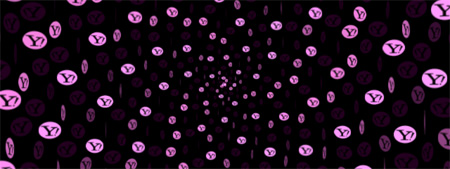Fibonacci Logos
Here’s my latest Quartz Composer screensaver for the Mac. This combines the fibonacci spiral seen in a lot of my graphic images with the harmonic motions from my Whitney Music Box.
The motion in this screensaver is actually quite simple — if you look at each disc, you’ll see that it is just sitting in place, rotating at a constant rate. However, each disc spins slightly faster than the next largest one, which produces a series of very interesting patterns over about a 10 minute cycle.
Mac Users: To install these as screensavers, drag them into your Library/Screen Savers folder. If you don’t see a ‘Screen Savers’ folder in your library folder, make one. Any .qtz files in this folder will appear in your list of screen savers on the control panel.
By the way, if you don’t have a Mac, or just want to see the effect without downloading the screensaver, click here to view a flash movie which uses the same effect (although not as elegantly as the screensaver).
I would love to figure out how to produce a mechanical version of this screensaver, using real discs or spheres, driven by a single chain and controlled by a crank, but I haven’t yet figured out a simple way to construct it.
One of the reasons I produce so many screensavers is that I really don’t like having screensavers I didn’t personally write running on my computer. Since I get bored easily, I make new ones from time to time.
I think the Yahoo logo works well in this screensaver (and I work there, so it’s appropriate), but feel free to edit this in Quartz Composer and swap in your own logo.



April 6th, 2007 at 12:18 am
It would be easiest to construct a physical version with each disc having a period that is some multiple of a basic unit, preferable equal to the fastest spinning disc’s period. You probably did do this already? I’m imagining the construction in layers, with connected gears on each layer and rods connecting them to the display on the front. The first layer has a size 1 gear and it is connected to the first several layers with more size-1 gears. These connect to size p gears in the layers, for prime numbers p. These size p gears will affect gears in further layers by small ratios so that you can have a rod that rotates every p, 2p, 3p intervals. Then these rods connect to the display on the front.
The challenge would be, first, positioning the gears so that the display is how you want it, and, second, deciding how large a number you could reach without the mechanical complexity (and, thus, breakdown risk) becoming too great. For the display discs, I’d suggest a wheel that goes from one color to another, either by gradient or by the cold/warm slants you see on car thermostats. Then cover up all but a small sector of the wheel, or even shape the opening into a circle itself. I want to make sketches now.